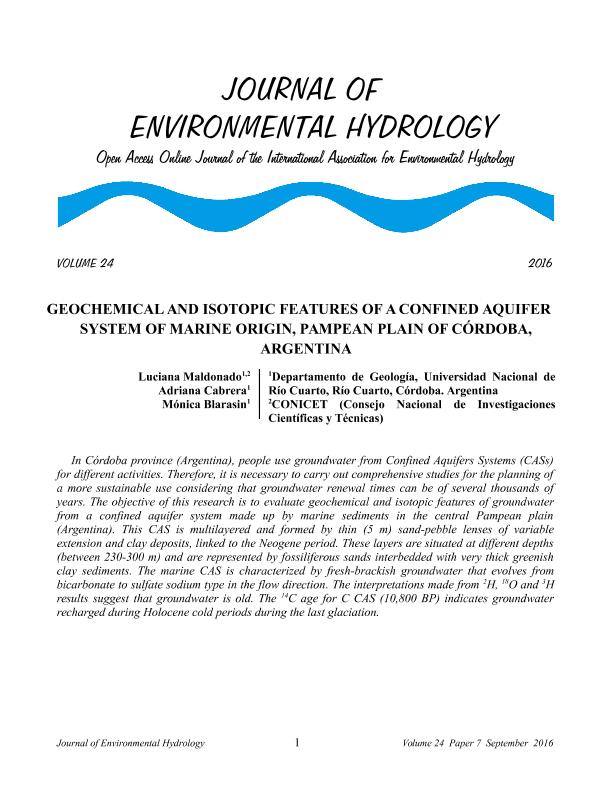Artículo
Geochemical and isotopic features of a confined aquifer system of marine origin, pampean plain of Córdoba, Argentina
Fecha de publicación:
09/2016
Editorial:
International Association for Environmental Hydrology
Revista:
Journal of Environmental Hydrology
ISSN:
1058-3912
Idioma:
Inglés
Tipo de recurso:
Artículo publicado
Clasificación temática:
Resumen
In Córdoba province (Argentina), people use groundwater from Confined Aquifers Systems (CASs)for different activities. Therefore, it is necessary to carry out comprehensive studies for the planning of a more sustainable use considering that groundwater renewal times can be of several thousands of years. The objective of this research is to evaluate geochemical and isotopic features of groundwater from a confined aquifer system made up by marine sediments in the central Pampean plain (Argentina). This CAS is multilayered and formed by thin (5 m) sand-pebble lenses of variable extension and clay deposits, linked to the Neogene period. These layers are situated at different depths (between 230-300 m) and are represented by fossiliferous sands interbedded with very thick greenish clay sediments. The marine CAS is characterized by fresh-brackish groundwater that evolves from bicarbonate to sulfate sodium type in the flow direction. The interpretations made from 2H, 18O and 3H results suggest that groundwater is old. The 14C age for C CAS (10,800 BP) indicates groundwater recharged during Holocene cold periods during the last glaciation.
Palabras clave:
marine ingression
,
groundwater age
,
groundwater quality
Archivos asociados
Licencia
Identificadores
Colecciones
Articulos(CCT - CORDOBA)
Articulos de CTRO.CIENTIFICO TECNOL.CONICET - CORDOBA
Articulos de CTRO.CIENTIFICO TECNOL.CONICET - CORDOBA
Citación
Maldonado, Marina Luciana; Cabrera, Adriana; Blarasin, Mónica Teresa; Geochemical and isotopic features of a confined aquifer system of marine origin, pampean plain of Córdoba, Argentina; International Association for Environmental Hydrology; Journal of Environmental Hydrology; 24; 7; 9-2016; 1-12
Compartir




